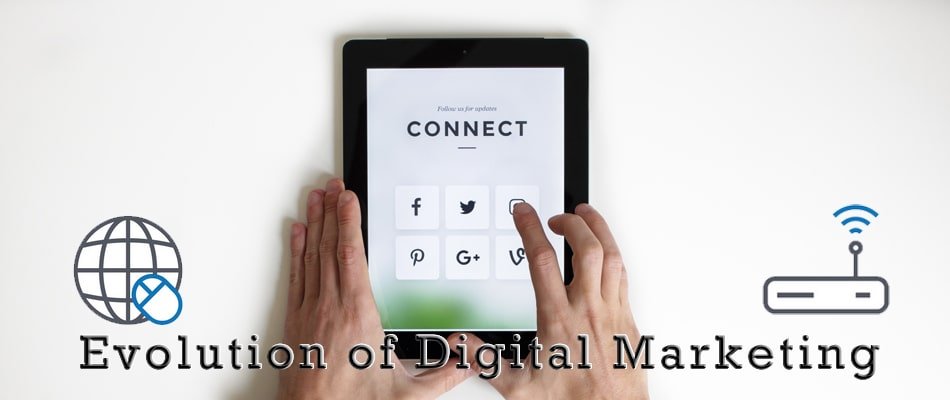Evolution of Digital Marketing

Digital marketing has become the norm of business strategy in the present era, and there are infinite ways in which businesses can amplify their opportunity and communicate with targeted consumers. The evolving nature of the web-based marketplace brings forth the evolution of the technology and processes used by successful marketing campaigns.
Digital marketing is far different now from what it used to be. This is how it evolved over time:
Early Beginnings: 1990s
- 1990: The “digital marketing” word came in existence. Web 1.0 platform facilitated information gathering but not sharing.
- 1993: Internet advertising began when the clickable web banner advertisement became available.
- 1996: LookSmart, HotBot, and Alexa were developed as search engines.
- 1997: The inception of SixDegrees.com occurred and it was launched as the world’s first social networking website.
- 1998: Google founded, revolutionizing search engine marketing.
Growth and Development: 2000s
- 2000: Dot-com bubble burst, erasing smaller search engines and making space for giants to grow like Google.
- 2002: LinkedIn was founded as a professional networking site.
- 2003-2004: MySpace, WordPress, and Gmail were introduced, boosting online messaging and content posting.
- 2005: YouTube was launched, changing the face of video marketing.
- 2006: Search engine traffic increased exponentially; Twitter was founded and Microsoft released Live Search.
- 2007-2008: Tumblr, Hulu, iPhone, Groupon, and Spotify came onto the scene.
- 2009: Google released Google Instant and AdSense, refining targeted ads.
Social Media and Mobile Era: 2010s
- 2010: Google Buzz and WhatsApp came out.
- 2011: Google Panda and Google+ came out.
- 2012: Social media advertising budgets increase rapidly; Google Knowledge Graph came out.
- 2013: Yahoo bought Tumblr.
- 2014: Mobile phone users became more than PC users; iWatch, LinkedIn, and Facebook Messenger targeted ads came out.
- 2015: Snapchat’s Discover came out; Facebook launched “Instant Articles.”
Role of Cookies
Cookies have developed from basic user preference recording mechanisms to advanced tools utilized to gather user information for marketing.
Importance of Digital Marketing Today
Digital marketing has played a key role in contemporary businesses. This is due to:
Reach and Engagement
Businesses can reach their target audience via numerous online channels. Social media, among other digital resources, allows direct engagement with customers.
Cost-Effectiveness
Digital marketing is cheaper than conventional marketing, with increased return on investment.
Measurable Results
It is possible to measure and monitor online marketing campaigns, and changes can be made for better results.
Future of Online Marketing
As technology advances, online marketing will be more reliant on automation and artificial intelligence (AI).
AI and Automation
Analysis of Data: AI is capable of analyzing massive amounts of data to identify trends in the market and customer activity.
Personalization: AI is able to personalize messages, recommendations, and content based on user activity.
Efficiency: AI is able to make processes automatic, reducing time and expenses.
AI Customer Support
AI chatbots can answer customer questions and resolve issues, improving the customer experience.
Blending Traditional and Digital Marketing
A successful marketing plan should blend the conventional and the digital methods in order to serve the brand message and acquire maximum impact. Adaptability and flexibility are the key features of effective marketing plans.
Conclusion
Digital marketing is a fast-changing industry that offers great opportunities to companies. If the marketers stay up to date on upcoming trends and innovations, they can create effective campaigns that drive growth and engagement. Combining old and new school approaches can offer a balanced approach for reaching and engaging customers.